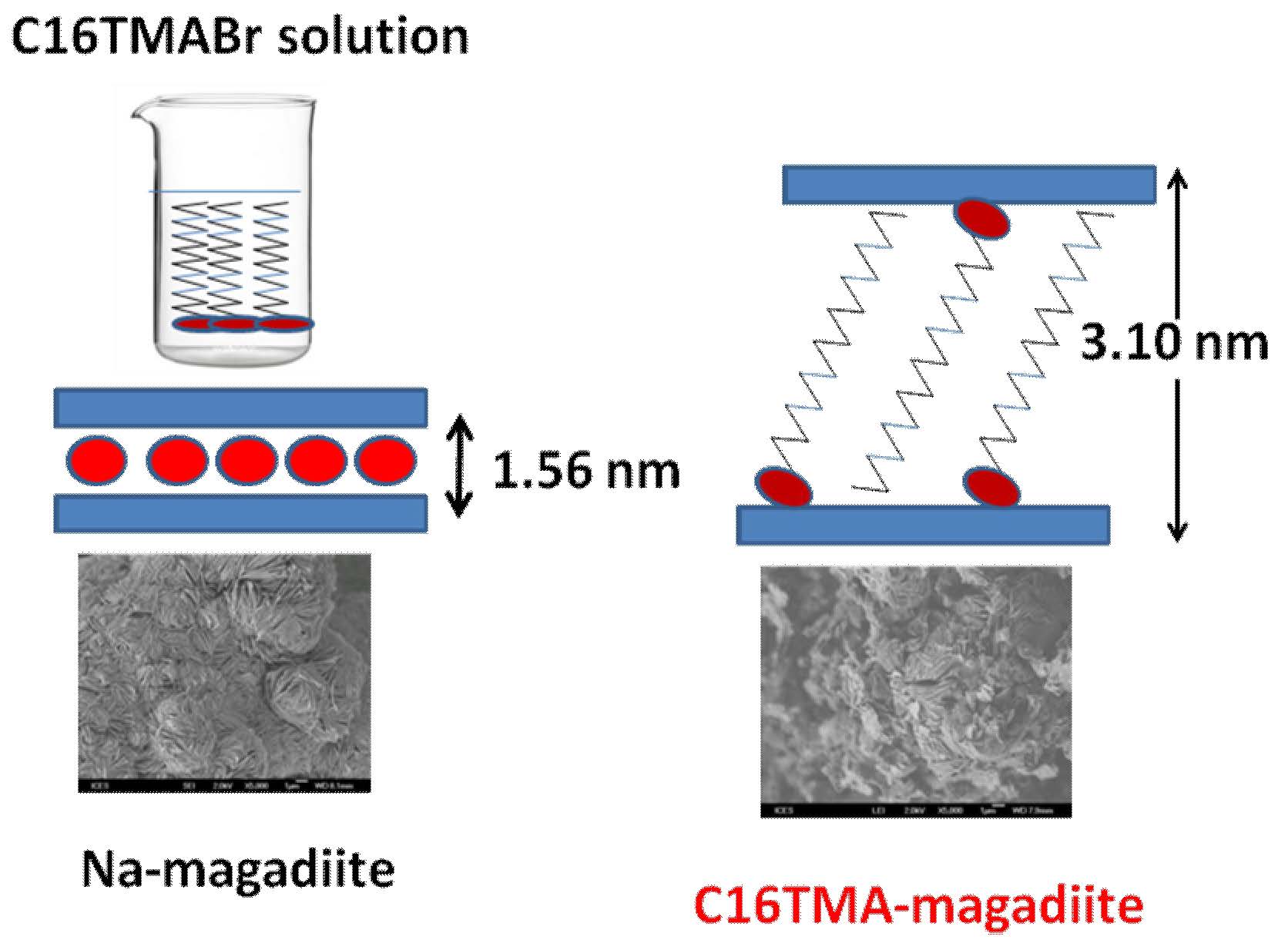Na-magadiite exchanged with cetyl-trimethylammonium cations provided organophilic silicate materials that allowed the effective removal of the acidic dye "eosin". The organic cations were intercalated into the interlayer spacing of the layered silicate via an exchange reaction between the organic cations from their bromide salt and the solid Na-magadiite at room temperature. Different techniques were used to characterize the effect of the initial concentration of the surfactant on the structure of the organo-magadiites. The C, H, N analysis indicated that a maximum of organic cations of 1.03 mmol/g was achieved at initial concentrations higher than 0.25 mmol/g and was accompanied by an expansion of the basal spacing of 3.15 nm, with a tilted angle of 64.5° to the silicate layers. The conformation of the organic surfactants was probed using solid-state 13C, finding mainly the trans conformation similar to that of the starting cetyl trimethylammonium bromide salt (C16TMABr). Thermal gravimetric analysis was carried out to study the thermal stability of the resulting organo-magadiites. The intercalated surfactants started to decompose at 200 °C, with a mass loss percentage of 8 % to 25 %, depending on the initial loading of the surfactant, and was accompanied by a decrease of the basal spacing from 3.20 nm to 2.51 nm, as deduced from the in situ X-ray diffraction studies. At temperatures below 220 °C, an expansion of the basal spacing from 3.15 to 3.35 nm occurred. These materials were used as a removal agent for the anionic dye "eosin". The maximum amount of the dye removed was related to the organic cation content and to the initial concentration of eosin, with an improvement from 2.5 mg/g to 98 mg/g. This value decreased when the organo-magadiite was preheated at temperatures above 200 °C. The regeneration tests indicated that an 85 % removal efficiency was maintained after 6 cycles of use for the organo-magadiites.

